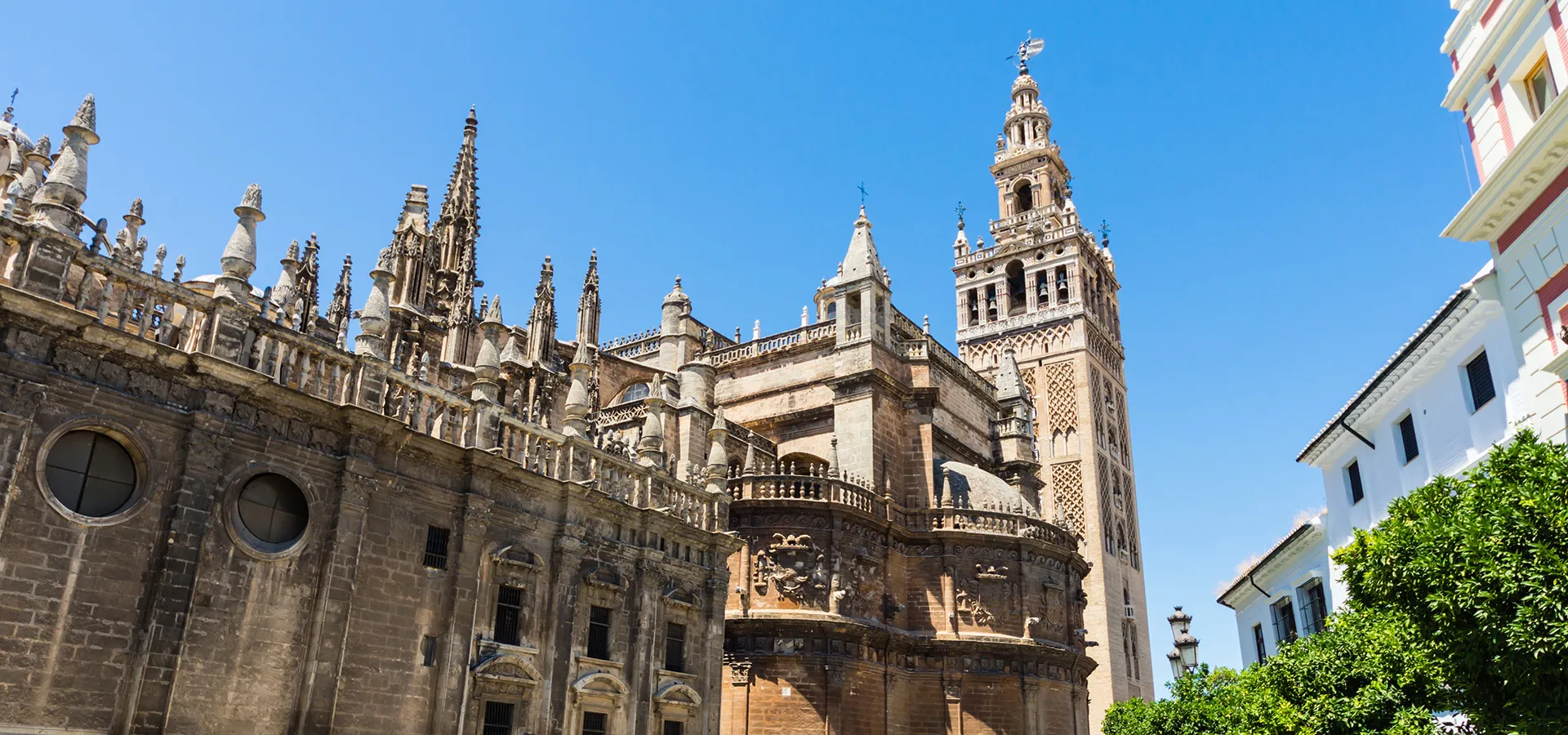
7 curiosities about the Cathedral of Seville that you should know before your visit
Legend has it that when planning the construction of the Seville Cathedral, the canons said: "Let us build a church so big that those who see it completed will think we were mad." They were right: no one can remain indifferent to its beauty. Today, it is one of the most impressive and iconic monuments of Seville’s heritage. If you haven’t visited it yet, we recommend taking a guided tour of the Seville Cathedral to make sure you don’t miss any details. Today, we’ll tell you some curiosities about the Seville Cathedral that you probably didn’t know, so you can better prepare for your guided visit:
1. The Cathedral of Seville is the biggest Gothic Cathedral in the world
Covering an area of 11,520 square meters, the Seville Cathedral is the largest Gothic cathedral in the world and the third-largest Catholic church overall, following St. Peter’s Basilica in the Vatican and St. Paul’s Cathedral in London. In addition, its interior nave is the longest in Spain, reaching a height of 42 meters and spanning nearly 9,000 square meters.
2. The Cathedral of Seville has been built over the old Mosque
Although no official documentation certifies its exact construction date, it is believed that the Seville Cathedral was begun in 1401. It was built on the site of the old Great Mosque of Isbilya, which was heavily damaged by the 1356 earthquake. Three elements from the old mosque remain: the Patio of the Orange Trees, the Gate of Forgiveness—one of the entrances to the Seville Cathedral—and the lower two-thirds of the Giralda, the mosque’s former minaret.
3. Where do the chains around the Cathedral of Seville come from?
If you’ve walked around the Seville Cathedral and its plaza, you’ve probably noticed an unusual feature: the columns connected by iron chains. Their purpose was to mark the boundaries of ecclesiastical jurisdiction, which had a different system of justice from the secular courts. This allowed those seeking to escape secular justice and claim asylum under ecclesiastical protection to know where to go. This separation of jurisdictions lasted until the mid-16th century in Seville.
4. There’s a Crocodile in the Seville Cathedral
Did you know there’s a life-sized crocodile in the Cathedral? The famous “Seville Lizard” is believed to have been a gift from the Sultan of Egypt to King Alfonso X around 1260. Although the original stuffed animal was eventually replaced with a wooden replica, it can still be seen in one of the corridors surrounding the Patio of the Orange Trees, alongside a bit, an elephant tusk, and a ceremonial staff. Don’t forget to check them out during your tour of the Seville Cathedral!
5. The Seville Cathedral "Breathes"
Yes, you read that correctly. Every day, the building’s structure expands and contracts by up to three centimeters due to temperature changes. This “breathing” is perfectly normal in structures like the Seville Cathedral and helps prevent disasters such as collapses, which are more likely in rigid architectural constructions.
6. Who Is Buried in the Seville Cathedral?
Inside the Seville Cathedral lie the remains of several former monarchs, including Ferdinand III of Castile, Alfonso X the Wise, and Peter I of Castile. Also buried here are other notable figures in Spanish history, such as the tomb of Christopher Columbus and his son, Hernando. All these sepulchers are on public display and are part of the guided tours of the Seville Cathedral.
7. The Cathedral of Seville is a World Heritage Site
The Seville Cathedral was declared a UNESCO World Heritage Site in 1987, along with the Archivo de Indias and the Real Alcázar. The original declaration reads:
“The Cathedral—and the Alcazar—of Seville provide exceptional testimony to the civilization of the Almohads and to Christian Andalusia from the Reconquista in 1248 until the 16th century. The Giralda, which influenced the construction of numerous towers in Spain and the Americas, is a masterpiece of Almohad architecture. The immense cathedral, with its five naves, is the largest Gothic building in Europe. The elliptical Chapter House, created by Hernán Ruiz, is one of the most beautiful architectural works of the Renaissance.”
The Seville Cathedral is undoubtedly a must-visit for any traveler exploring the Andalusian capital. Discover it through one of the many options for guided tours with tickets to the Seville Cathedral.